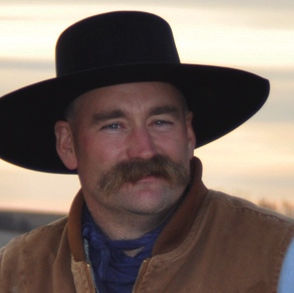Recently I attended the 2023 Horseman’s Benevolent and Protective Association convention in New Orleans, Louisiana, and the primary topic of discussion is how to comply with the Horse Integrity and Safety Act. In fact, the universal discussion revolves around whether or not the horse race tracks should try to comply or simply tell the feds to stick it where the sun doesn’t shine.
I shared with these horse racing enthusiasts that the HISA talks about addressing the welfare of the horse when, in my opinion, the act is simply about eliminating the small and mid-sized tracks around the nation.
Simply put, some big money interests have a created a narrative that horse racing is all about doping and cheating.
Let’s instead focus on my greatest passion in regard to human and planet health: the vital need for grazing animals. I have long told people about the study that documented migratory birds are 17 times more likely to land on grazed land than ungrazed land. Yet the federal government has worked tirelessly for the past 40 years to chase cows from the land. I clearly remember speaking at the Nebraska Cattlemen’s meeting about 15 years ago when I shared that the government was trying to prove that cows are the major contributors to climate change and the cattlemen laughed. Nobody is laughing today but it’s too late because far too many people actually believe it’s true.
On March 3, 2023, the Department of Interior released Order 3410, which was all about the benefits of bison grazing the land. This is part of an agreement reached with several Native American tribes to grant $25 million to them so they can increase buffalo herds that roam the prairie. I have long called it the plan to “rewild America.”
Let me share one sentence from this 10-page document outlining Order 3410:
While the security of the species is a conservation success worth celebration, bison remain functionally extinct to both grassland systems and the human cultures with which they coevolved. Today’s announcement will help advance bison restoration efforts to grasslands, which can enhance soil development, restore native plants and wildlife, and promote carbon sequestration, providing benefits for agriculture, outdoor recreation, and Tribes.
Wait! Is that the federal government admitting that ruminant animals are great at creating diversity, increasing carbon sequestration, and improving soil health? Indeed, it is.
It reminds me of a gathering in Las Vegas, Nevada, in 2010 when I was talking to a cameraman for PBS in Los Angeles. He asked about my ranch and I told him we have cattle. His first question was, “Why don’t you own buffalo? They are so much better for the environment.” I had to ask him why he thought that and he went right back to the American Indian era and then shared with me that buffalo were smarter than cows because they did not defacate in the creek.
The misinformation is mostly intentional, in my opinion, because people know that as long as humans own animals, we are independent and will strive for freedom. I started this with the horse and how it embodies that symbol of freedom. I could make the case that the American buffalo would be a close second as a symbol of freedom. I don’t disagree with the magic of either one of those animals, but at the end of the day humans and animals need to be mutually beneficial. Animals without humans or humans without animals—both will suffer. Seek the truth, in all cases, because it is the truth itself that will set you free.
Editor’s note: The views expressed here are the author’s own and do not represent the views of High Plains Journal. Trent Loos is a sixth generation United States farmer, host of the daily radio show, Loos Tales, and founder of Faces of Agriculture, a non-profit organization putting the human element back into the production of food. Get more information at www.LoosTales.com, or email Trent at [email protected].



